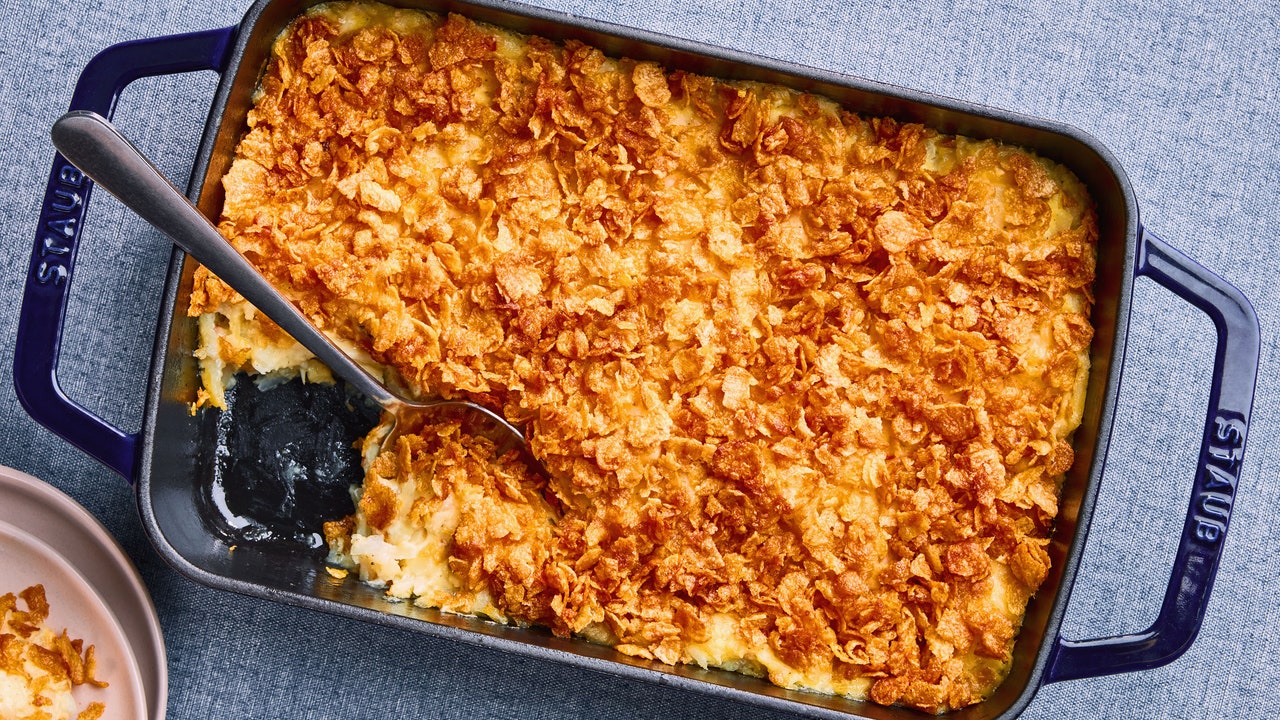
Early in the morning on Thanksgiving, I’d rush from my bed straight to the kitchen, eager to help my mom with the holiday preparations. She’d already been cooking for days at this point—chopping vegetables, gathering giblets for gravy, and drying out batches of cornbread for her dressing (which if we were lucky, came twofold—one version enriched with chunks of sausage; the other bolstered with shrimp and crawfish). There was a lot to get excited about, but nothing thrilled me more than the boxes of Kellogg’s Corn Flakes sitting atop the fridge that would become the crunchy topping for our family’s favorite side dish: Texas Potatoes.
Texas potatoes—also called Funeral Potatoes—have been a staple in my family for as long as my siblings and I can remember. My parents, natives of southern Louisiana, found themselves in Texas in the early 1970s, newly married, and soon raising the first two of four children. My mom quickly adjusted to Texas life, and wanted her children to feel rooted in the state. She learned and honed recipes for sheet cake, Texas chili, and taco night fillings, and exchanged favorites with women from a wide variety of cultures who’d also migrated to the state. As an elementary school teacher, my mom befriended many other avid home cooks, including my 3rd grade teacher, Brenda Sancamper, who shared invaluable cooking tips. It was Mrs. Sancamper, a white Midwestern woman who’d lived in a few different parts of the South, who introduced my mom to Texas Potatoes. My mother loved the idea of a cheesy potato dish that wasn’t especially difficult to make during the holidays, and after the rave reaction the first Thanksgiving she tried it, Mom kept it on the holiday menu rotation for decades.
The name Funeral Potatoes may not signal cheerfulness, but the dish is comforting in origin and nature. The beloved casserole—a thick layer of creamy, cheesy diced potatoes baked under a buttery, hefty layer of crushed cornflakes—emerged in Utah’s Mormon community during the late 19th century; like food traditions in many of the world’s cultures, it’s a staple that seeks to comfort the grieving.
In Funeral Festivals in America: Rituals for the Living, author Jacqueline S. Thursby notes that the potato-cheese casserole became a mainstay of funeral events in northern Utah, where the Church of Jesus Christ of Latter-day Saints became a primary vessel for the casserole’s rapid rise in popularity in the state. Funeral potatoes, Thursby writes, became “an expectation at the funeral meals in the region.” Over time, the dish also became associated with happier religious ceremonies, too, like Christmas and Easter.
